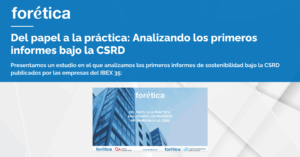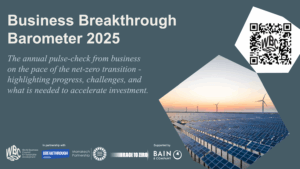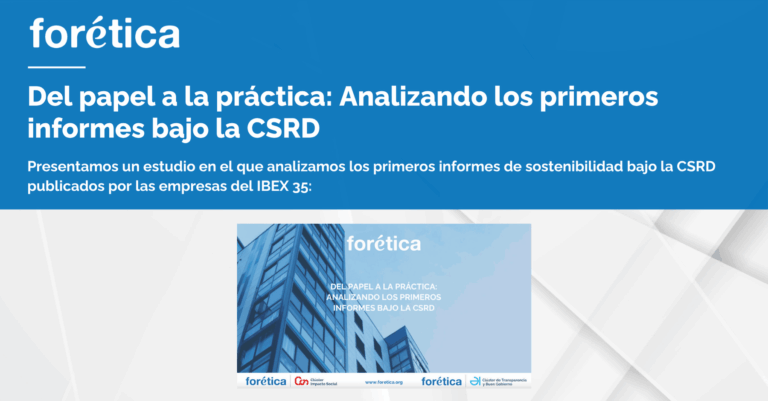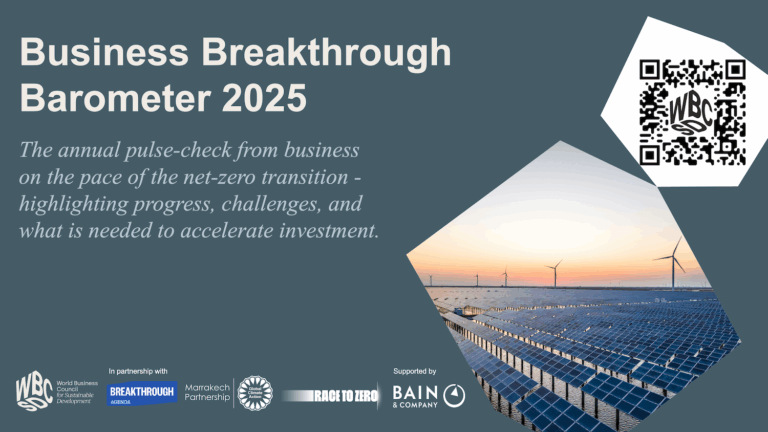Cada vez son más las organizaciones que comprenden la necesidad de incorporar la gestión de los riesgos ambientales, sociales y de gobierno corporativo en su sistema de gestión global del riesgo y es fácil observar como los departamentos de sostenibilidad o de RSC de dichas organizaciones se esfuerzan por lograr su integración de una forma transversal en la organización.
Dejando a un lado las distintas guías y recomendaciones que de un tiempo a esta parte vienen siendo publicadas y que por supuesto doy por hecho que cualquier profesional en la materia debe de conocer y analizar, me gustaría compartir cinco reflexiones personales producto de mi propia experiencia y que espero que alguna de ellas puedan ser de utilidad.
1ª reflexión: Riesgo & incertidumbre
Creo que hay una ligera confusión cuando se hace referencia a los riesgos extrafinancieros pues es parece fácil caer en la tentación de tratarlo como cualquier otro riesgo. Sin embargo, parece obvio que la principal característica de ese tipo de riesgos es la incertidumbre y que a diferencia de cualquier otro riesgo que podamos gestionar mediante probabilidades, los riesgos extrafinancieros deben ser gestionados como posibilidades antes distintos escenarios y no podemos conocer con certeza su impacto en el supuesto de que se llegaran a materializar.
2ª reflexión: Riesgo & Factor de Riesgo
Partiendo de esa diferenciación entre riesgo e incertidumbre, me pregunto hasta que punto, es válido que tratemos a los riesgos extrafinancieros como un nuevo riesgo, y en cambio no nos preguntemos si habría que tratarlo como un factor de riesgo. En ese punto, entender la diferencia entre riesgo y factor de riesgo es fundamental. De una forma muy simplificada podríamos decir que riesgo es todo aquel proceso con probabilidad de resultado desfavorable, por otra parte podríamos definir el factor de riesgo como todo aquel proceso que potencia la probabilidad de riesgo.
Es decir, tratar los riesgos extrafinancieros como factores de riesgo no implica ningún cambio en el modelo de gestión global del riesgo de la organización, aunque si comporta la necesidad de identificar dichos factores de riesgo y relacionarlos con los riesgos tradicionales que viene gestionando la organización con el fin de que puedan ser evaluadas aquellas medidas orientadas a minimizar su posible impacto.
En mi opinión es responsabilidad del Área de Sostenibilidad quién debe de identificar los factores de riesgos extrafinancieros y proponer medidas a los responsables de los riesgos tradicionales para minimizar su impacto. Pero son los responsables de riesgo tradicionales los que tienen la última palabra y asumen la responsabilidad de su gestión.
Ese tratamiento por otra parte facilita en gran medida la integración en el modelo de gestión global del riesgo y su presencia en las distintas áreas de defensa que garanticen una buena gestión, control y supervisión.
Además si ello no fuera poco, también facilita que sea la comisión de riesgos del Consejo la que asuma la responsabilidad final de supervisar toda esa labor.
Con ello no pretendo ni mucho menos restar importancia a una supuesta comisión de sostenibilidad que pudiera estar presente en la organización y que probablemente tenga sentido desde una perspectiva más estratégica, pero en mi opinión, si se trata de riesgos creo positivo que no se hagan diferenciaciones.
3ª reflexión: Riesgos extrafinancieros & Impacto económico financiero
Asumiendo que hemos decidido tratar los riesgos extrafinancieros como factores de riesgo y que consecuentemente potencian la probabilidad de alguno de los riesgos tradicionales, parece razonable que dichos factores tendrán un impacto económico-financiero y que ese impacto debe de estar contemplado en el proceso de planificación financiera. No hacerlo es equivalente a decir que dichos factores de riesgo no nos afectan.
Consecuentemente, su integración en el área financiera es a su vez mucho más natural y no es necesario cambiar ninguno de los procesos internos de la organización.
4ª reflexión: Escenarios, corto plazo & largo plazo
Resulta fácil caer en la tentación de evaluar las posibilidades ante escenarios de largo plazo….en cierta forma no deja de ser una forma de retrasar su impacto en la cuenta de resultados….sin embargo, sugiero que no olvidemos los escenarios a corto plazo puesto que el comportamiento de los mercados y las decisiones de muchos inversores ya están anticipando los efectos.
En ese sentido los riesgos de transición requieren un profundo análisis y como ejemplo, la evolución del mercado de derechos de Emisión:
- Media anual 2017: 5,83 euros
- Media anual 2018: 15,88 euro
- Media anual 2019: 24,79 euros
5ª reflexión: Prudencia & diversificación
Probablemente esa última reflexión no debería de hacer falta mencionarla, puesto que una de las primeras cosas que todos aprendemos en la gestión de organizaciones y especialmente cuando tratamos los riesgos a los que nos enfrentamos, es la necesidad de aplicar el principio de prudencia. Creo que no estar equivocado al decir que poco importa lo que cada uno piense acerca de que se materialicen los factores de riesgos que hayan sido identificados. Desde la perspectiva empresarial lo que verdaderamente importa y lo que se espera de cada uno de sus miembros es que actúe con responsabilidad y la debida diligencia en la gestión de posibles riesgos. Y al igual que aprendemos la importancia de ser prudentes también aprendimos todos que la mejor forma de desarrollar este principio, es a través de una adecuada selección y diversificación de los riesgos que asumimos.

















